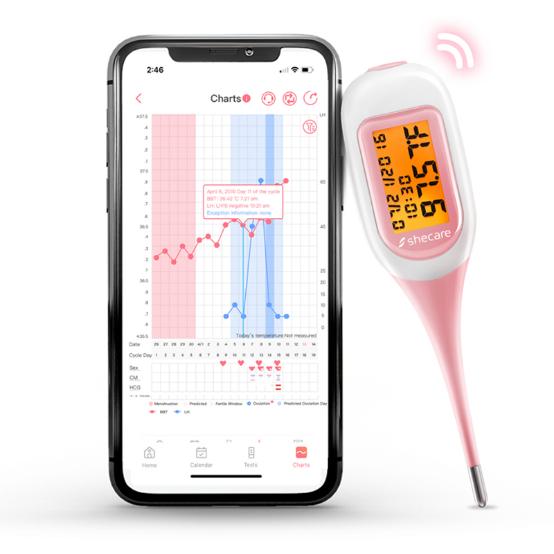Basal Body Temperature (BBT) is a powerful and natural tool for tracking a woman's menstrual cycle. It plays a crucial role in predicting ovulation and can be a valuable asset for those trying to conceive or monitor their reproductive health. In this article, we will explore what BBT is, how it works for predicting ovulation, and the best practices for measuring basal body temperature accurately.
Basal Body Temperature (BBT) refers to the body's lowest resting temperature. It is typically measured in the morning, just after waking up, and before engaging in any physical activity. BBT is considered one of the most reliable indicators of a woman's menstrual cycle and hormonal fluctuations. Understanding how BBT changes throughout the menstrual cycle can help individuals predict ovulation and identify potential fertility windows.
Accurate measurement of BBT is essential for it to be a reliable ovulation prediction tool. Here's how to measure BBT effectively:
a. Use a Specialized BBT Thermometer: Invest in a basal body temperature thermometer, which is more precise and sensitive than regular thermometers. These thermometers display temperature readings to two decimal places (e.g., 97.65°F or 36.47°C).
b. Consistency is Key: Measure your BBT at the same time every morning, preferably after at least 3-4 hours of uninterrupted sleep and before getting out of bed.
c. Avoid Activity: Do not engage in any physical activity or get out of bed before taking your BBT, as these actions can raise your body temperature and affect accuracy.
d. Oral or Vaginal Measurement: You can measure BBT orally or vaginally. Choose one method and stick with it consistently for the most reliable results.
e. Record and Chart: Keep a dedicated BBT chart or use a fertility tracking app to record your daily temperature readings. Look for the temperature dip followed by a sustained rise to predict ovulation.

Differernt from digital armpit thermometer, BBT works as an ovulation prediction tool due to the hormonal changes that occur during the menstrual cycle:
a. Menstrual Phase: At the beginning of the cycle, BBT is at its lowest point. This is usually the time of menstruation.
b. Follicular Phase: After menstruation, BBT starts to rise slightly due to the hormone estrogen. As the ovaries prepare to release an egg, the body's temperature increases gradually.
c. Ovulation: The day before ovulation, BBT reaches its lowest point, known as the "temperature dip." After ovulation, progesterone, a hormone released by the corpus luteum (the follicle that released the egg), causes BBT to rise significantly. This temperature shift is a clear sign that ovulation has occurred.
d. Luteal Phase: Throughout the luteal phase (post-ovulation), BBT remains elevated. This phase typically lasts for around 12-14 days.
e. Menstruation Again: If fertilization does not occur, BBT drops back down as a new menstrual cycle begins.
By tracking these temperature fluctuations, women can pinpoint their most fertile days, helping them maximize their chances of conception or, conversely, use it as a natural form of contraception.
Basal Body Temperature, when used correctly, is a valuable tool for tracking ovulation and understanding the menstrual cycle. By monitoring the subtle changes in your body's resting temperature, you can predict your fertile days with accuracy, whether you are trying to conceive or simply want to better understand your reproductive health. Remember that consistency in measurement is crucial for achieving meaningful results, so start charting your BBT today to unlock the secrets of your menstrual cycle.